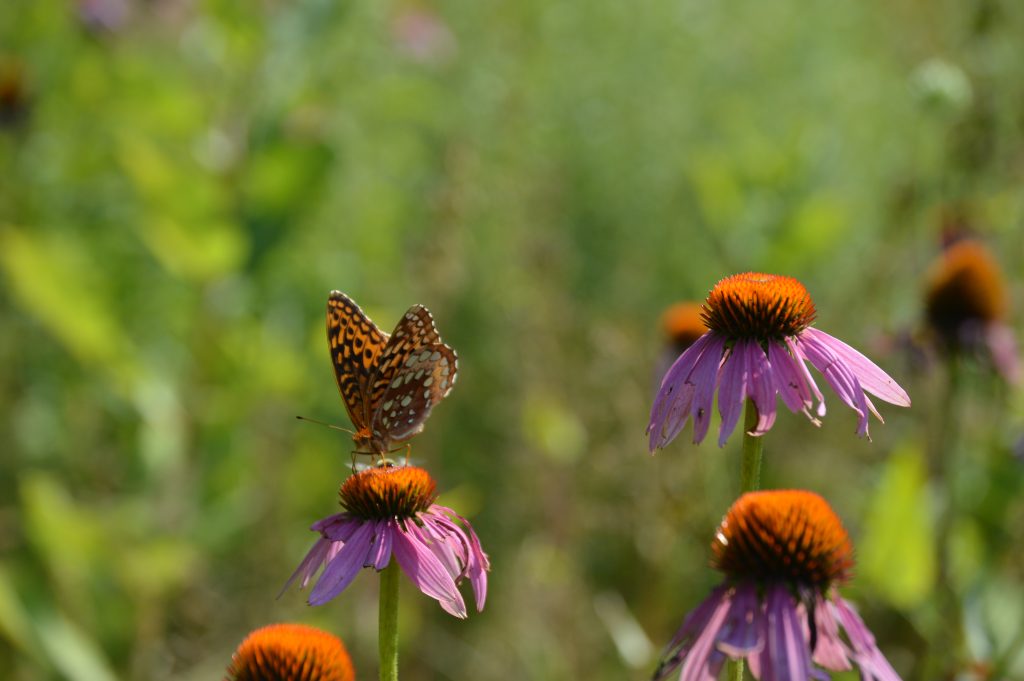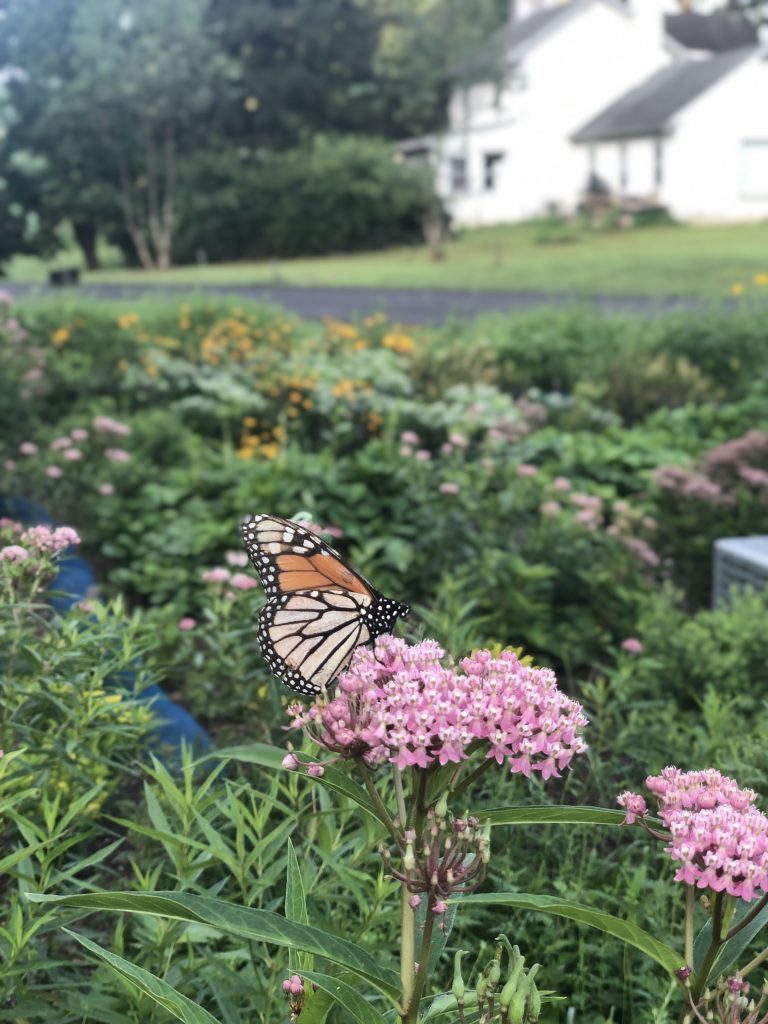Rain gardens are popping up everywhere. You will find them on college campuses and office parks, in mall parking lots, along city streets and multiuse trails. They have grown in popularity over the last several years, in response to the many problems stormwater causes in the landscape.
When it rains – especially a heavy rain – we see flooding, erosion, and pollution from stormwater runoff. Just the first inch of rain during a storm collectively does the most harm.
The good news is local use of rain gardens (even on your own property!) can help to reduce flooding, erosion, and pollution over a broad region.
The Benefits of a Rain Garden
A rain garden on your property provides numerous benefits, including:
- Intercepting water and provide habitat for birds and wildlife
- Reducing stormwater runoff by 30% compared to a traditional turf lawn
- Adding natural beauty
It is not just another garden bed and does not need to be limited to perennial wildflowers and grasses. Shrubs and trees can also be used in rain gardens to achieve increased absorption, retention, and beauty.
Planning Your Rain Garden
When planning a rain garden, you need to determine what is known as the infiltration rate of your soil, or how quickly water drains through it. This will indicate whether your soils can support a rain garden. You can test it yourself in 4 easy steps:
- Dig a hole 1’ deep, being careful not to disturb the sides or compact the soil in the hole.
- Pour 444 mL (1”) of water into the hole and let it drain completely
- Fill the hole with water again and place a ruler in the center flush with the bottom to measure the depth
- Wait 15 minutes, measure the water depth again then multiply the result by four to determine the infiltration rate. Rates of .5 to 8 inches in an hour are sufficient for rain gardens.
Next, consider the location and size of the rain garden. The Philadelphia Water Department recommends sizing your rain garden to be 20-30% of your impervious surfaces (roof, driveways, patios, and walkways). The rain garden should be a minimum of ten feet away from the foundation of your house and your property line and in the lowest spot of the yard. The area should have a 1% slope away from your house for proper drainage. The rain garden will need either an outflow or a drain for larger storm events to prevent flooding. Make sure that the direction of the discharge is away from your house and your neighbor’s property.
When digging the rain garden, if your soil is rich with organic matter, two to three inches of depth will be sufficient. If it’s not and you need to amend it, dig down five to six inches and add compost. Always use PA 1-Call before you dig, to make sure you are clear of unseen obstacles underground. Taper the edges of the rain garden toward the center to prevent erosion.

Selecting Plants
And now for the exciting part: deciding what to plant. The funny thing about a rain garden is that most of the time, it is dry! While you might think wetland plants would be best, floodplain plants that can handle periods of inundation and drought are actually ideal. Basically, a rain garden functions like a small floodplain where water can stop, slow down, infiltrate into the soil and be absorbed by plant roots. The next question to ask is what plants are common to floodplains?
Depending on the size of your rain garden, planting a tree in it might not make sense. But if it does, a tree can be a fantastic focal point. In our region, you have a variety of native choices:
- canopy trees: red and silver maples, sycamore, river birch, pin oak, swamp white oak, and black gum.
- understory: black willow and sweet-bay magnolia
Bald cypress is a great southern species, too. As our area continues to warm up, using more southerly species may be a way to increase the long term vitality of your landscape.
The shrub layer of floodplains offer a rich palette of plants from which to choose. Highbush blueberry, red chokeberry, and black chokeberry look lovely and provide edible fruit. Buttonbush, arrowwood, winterberry holly, ninebark, meadowsweet, sweet pepperbush, possumhaw, red twig and silky dogwoods offer a variety of color, texture and seasonal interest to round out a rain garden. Once established, shrubs require minimal maintenance.
Thinking of your rain garden as a habitat with niches to fill can help guide design and plant selection. Plan on a variety of heights and moisture tolerances between the center and edges. Plant low growing cool season bunch grasses for early season cover, wildflowers for summer color, and shrubs for height and fruit.
Whether you plant trees, shrubs, wildflowers, or grasses, rain gardens can provide beauty, functionality, and habitat for your landscape. Dig deeper and decide for yourself what type of rain garden fits your landscape and start helping your community by reducing stormwater runoff at home. Many small actions can really make a difference.

This article was originally published in County Lines Magazine – May 2020 Issue.

